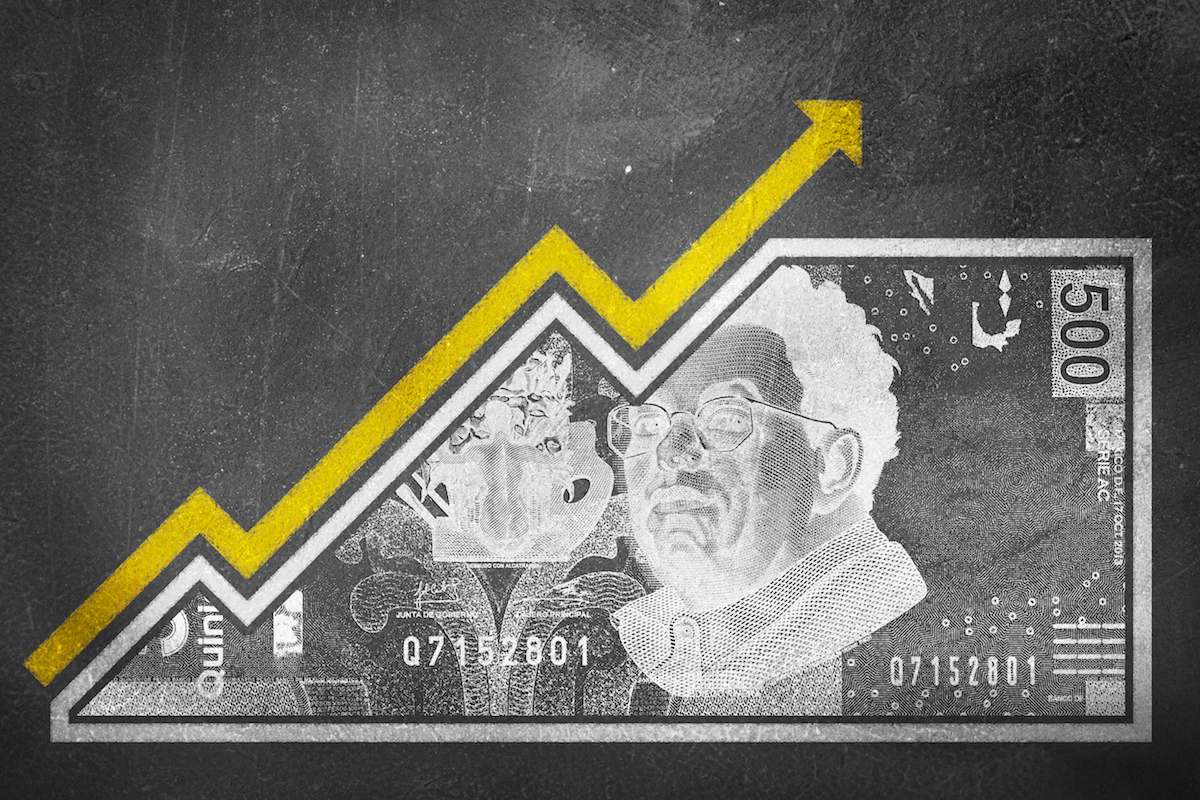Higher education, productivity and economic growth in Mexico between 2004 and 2015
DOI:
https://doi.org/10.18504/pl2958-014-2021Keywords:
productivity, economic growth, coverage in higher education, schooling, public investmentAbstract
A basic assumption for this study is that higher education generates important economic effects in the middle and long term related to the creation of technology, and the increase of productivity and levels of income. This empirical analysis shows that the public investment in higher education carried out in Mexico between 2004 and 2015 has not satisfactorily boosted the levels of productivity in order to achieve greater economic growth and social welfare. Nevertheless, higher rates of coverage and schooling have indeed had a positive impact on the rise of per capita income.
Downloads
References
Acemoglu, D., & Robinson, J. (2013). ¿Por qué fracasan los países? México: Crítica.
Arrow, K. J. (1973). Higher education as a filter. Journal of Public Economics, 2(3), 193-216. https://doi.org/10.1016/0047-2727(73)90013-3 DOI: https://doi.org/10.1016/0047-2727(73)90013-3
Arrow, K. J. (1962). The economic implications of learning by doing. The Review of Economic Studies, 29(3), 155-1973. https://doi.org/10.2307/2295952 DOI: https://doi.org/10.2307/2295952
Asociación Nacional de Universidades e Instituciones de Educación Superior (ANUIES). s. f. Anuarios Estadísticos de Educación Superior. http://www.anuies.mx/informacion-y-servicios/informacion-estadistica-de-educacion-superior/anuario-estadistico-de-educacion-superior
Barragán Codina, J. (2010). Impacto que tiene la inversión en educación superior sobre el desarrollo económico. Factor crítico de progreso econó. Daena: International Journal of Good Conscience, 5(1), 47-57. http://daena-journal.org/
Barro, R. J., & Sala-i-Martin, X. (1991). Convergence across states and regions. Brooking Papers on Economic Activity, (1), 107-182. https://www.brookings.edu/wp-content/uploads/1991/ ... n_blanchard_hall.pdf DOI: https://doi.org/10.2307/2534639
Bils, M., & Klenow, P. J. (2000). Does schooling cause growth?. The American Economic Review, 90(5), 1160-1183. https://doi.org/10.1257/aer.90.5.1160 DOI: https://doi.org/10.1257/aer.90.5.1160
Chang, H.-J. (2006). Understanding the relationship between institutions and economic development: Some key theoretical issues. (Discussion Paper, 2006/005). Helsinki: UNU/WIDER. https://www.wider.unu.edu/sites/default/files/dp2006-05.pdf
Consejo Nacional de Población (Conapo). (2017). Conciliación Demográfica de México 1950-2015. México: Segob/Conapo/CM/SOMEDE/UNFPA. https://www.gob.mx/cms/uploads/attachment/file/390813/Publicaci_n__Conciliaci_n_demogr_fica_de_M_xico_WEB-compressed.pdf
Díaz-Bautista, A., & Díaz, M. (2003). Capital humano y crecimiento económico en México. Comercio Exterior, 53(11), 1012-1023. http://revistas.bancomext.gob.mx/rce/magazines/59/4/RCE.pdf
Domar, E. D. (1946). Capital expansion, rate of growth and employment. Econometrica, 14(2), 137-147. https://doi.org/10.2307/1905364 DOI: https://doi.org/10.2307/1905364
Easterly, W. R. 2003. En busca del crecimiento: Andanzas y tribulaciones de los economistas del desarrollo. España: Antoni Bosch.
García, B. (2001). Educación, capital humano y crecimiento. Ciencia Ergo Sum, 8(1), 6-18. https://cienciaergosum.uaemex.mx/article/view/7930/6503
Harrod, R. F. (1939). An essay in dynamic theory. The Economic Journal, 49(193), 14-33. https://doi.org/10.2307/2225181 DOI: https://doi.org/10.2307/2225181
Instituto Nacional de Estadística y Geografía (INEGI). s. f. Banco de Información Económica (BIE). http://www.inegi.org.mx/sistemas/bie/
Instituto Nacional de Estadística y Geografía (INEGI). s. f. Censos y Conteos de Población y Vivienda. https://www.inegi.org.mx/programas/ccpv/2010/
Kruss, G., McGrath, S. Petersen, I., & Gastrow, M. (2015). Higher education and economic development: The importance of building technological capabilities. International Journal of Educational Development, (43), 22-31.
https://doi.org/10.1016/j.ijedudev.2015.04.011 DOI: https://doi.org/10.1016/j.ijedudev.2015.04.011
Loría, E. (2009). Sobre el lento crecimiento económico de México. Una explicación estructural. Investigación Económica, 68(270), 37-68.
https://doi.org/10.22201/fe.01851667p.2009.270.16681 DOI: https://doi.org/10.22201/fe.01851667p.2009.270.16681
Lucas, R. E. Jr. (1993). Making a miracle. Econometrica, 61(2), 251-272.
https://doi.org/10.2307/2951551 DOI: https://doi.org/10.2307/2951551
Lucas, R. E. Jr. (1990). Why doesn’t capital flow from rich to poor countries?. American Economic Review, 80(2), 92-96. http://links.jstor.org/sici?sici=0002-8282%2819900 ... O%3B2-J&origin=repec
Lucas, R. E. Jr. (1988). On the mechanics of economic development. Journal of Monetary Economics, 22(1), 3-42. https://doi.org/10.1016/0304-3932(88)90168-7 DOI: https://doi.org/10.1016/0304-3932(88)90168-7
Mankiw, N. G., Romer, D., & Weil, D. (1992). A contribution to the empirics of economic growth. The Quarterly Journal of Economics, 107(2), 407-437. https://eml.berkeley.edu/~dromer/papers/MRW_QJE1992.pdf
https://doi.org/10.2307/2118477 DOI: https://doi.org/10.2307/2118477
Miramontes, M. A., Ocegueda, J. M., & Moctezuma, P. (2014). La educación superior en México. Un enfoque comparativo internacional. México: Universidad Autónoma de Baja California.
Moreno-Brid, J. C., & Ruiz-Nápoles, P. (2010). La educación superior y el desarrollo económico en América Latina. Revista Iberoamericana de Educación Superior, 1(1), 171-188. https://www.redalyc.org/pdf/2991/299128587004.pdf
Mungaray Lagarda, A., & Torres Preciado, V. H. (2010). Actividad Económica y educación superior en México. Revista de la Educación Superior, 39(156), 7-18. http://publicaciones.anuies.mx/pdfs/revista/Revista156_S1A1ES.pdf
Ocegueda, J. M. (2007). Apertura comercial y crecimiento económico en las regiones de México. Investigación Económica, 66(262), 89-137. http://www.scielo.org.mx/pdf/ineco/v66n262/0185-1667-ineco-66-262-00089.pdf
Psacharopoulos, G., & Patrinos, H. (2002). Returns to investment in education: A further update. (Policy Research Working Paper, no. 2881). Latin America and the Caribbean Region, Education Sector Unit, The World Bank.
https://doi.org/10.1596/1813-9450-2881 DOI: https://doi.org/10.1596/1813-9450-2881
Romer, P. (1994). The origins of endogenous growth. Journal of Economic Perspectives, 8(1), 3-22. https://doi.org/10.1257/jep.8.1.3 DOI: https://doi.org/10.1257/jep.8.1.3
Romer, P. (1990). Enogenous technological change. Journal of Political Economy, 98(5), S71-S102. https://doi.org/10.1086/261725 DOI: https://doi.org/10.1086/261725
Romer, P. (1986). Increasing returns and long-run growth. Journal of Political Economy, 94(5), 1002-1037. https://doi.org/10.1086/261420 DOI: https://doi.org/10.1086/261420
Salas, I., & Murillo, F. (2013). Los profesionistas universitarios y el mercado laboral mexicano: Convergencias y asimetrías. Revista de la Educación Superior, 42-1(165), 63-81. https://www.redalyc.org/pdf/604/60428314004.pdf
Schumpeter, J. A. (1943). Capitalism, socialism and democracy. Nueva York: Harper. https://doi.org/10.4324/9780203202050_chapter_XIX DOI: https://doi.org/10.4324/9780203202050_chapter_XIX
Secretaría de Educación Pública (SEP). s. f. Cuestionario sobre financiamiento educativo estatal (CFEE). http://www.planeacion.sep.gob.mx/cfee/
Secretaría de Educación Pública (SEP). s. f. Estadística e Indicadores. Reporte de indicadores educativos. Dirección General de Planeación, Programación y Estadística Educativa . https://planeacion.sep.gob.mx/estadisticaeducativas.aspx
Solow, R. M. (1962). Technical progress, capital formation and economic growth. The American Economic Review, 52(2), 76-86. https://www.jstor.org/stable/1910871
Solow, R. M. (1956). A contribution to the theory of economic growth. The Quarterly Journal of Economics, 70(1), 65-94. https://doi.org/10.2307/1884513 DOI: https://doi.org/10.2307/1884513
Spence, M. (1973). Job Market Signaling. Quarterly Journal of Economics, 87(3), 1-17. https://doi.org/10.2307/1882010 DOI: https://doi.org/10.2307/1882010
Stiglitz, J. (1975). The theory of “screening”, education and distribution income. American Economic Review, 65(3), 283-300. http://links.jstor.org/sici?sici=0002-8282%2819750 ... O%3B2-0&origin=repec
Wooldridge, J. M. (2003). Cluster-sample methods in applied econometrics. The American Economic Review, 93(2), 133-138. https://doi.org/10.1257/000282803321946930 DOI: https://doi.org/10.1257/000282803321946930

Downloads
Published
Citas a este artículo:
How to Cite
Issue
Section
License
Copyright (c) 2021 Facultad Latinoamericana de Ciencias Sociales, sede México

This work is licensed under a Creative Commons Attribution-NonCommercial 4.0 International License.
![]() Esta obra está bajo una licencia Atribución-NoComercial 4.0 Internacional (CC BY-NC 4.0)
Esta obra está bajo una licencia Atribución-NoComercial 4.0 Internacional (CC BY-NC 4.0)










